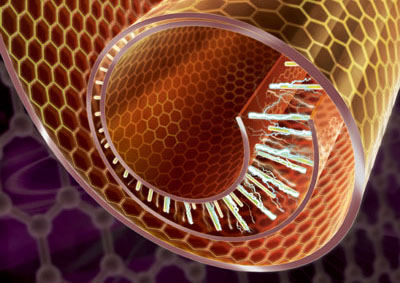Nanopiezotronics: Harnessing the Power of Nanoscale Piezoelectricity
Introduction to Nanopiezotronics
Nanopiezotronics is an emerging field that explores the coupling of piezoelectric and semiconductor properties at the nanoscale. It focuses on the development of novel devices and applications that utilize the piezoelectric effect in nanomaterials, such as zinc oxide (ZnO) nanowires, for sensing, actuation, and energy harvesting.

Piezoelectric Effect at the Nanoscale
The piezoelectric effect is a phenomenon where certain materials generate an electric charge in response to applied mechanical stress. In nanopiezotronics, this effect is harnessed at the nanoscale using piezoelectric nanomaterials. When these nanomaterials are subjected to mechanical deformation, such as bending or stretching, they generate a piezoelectric potential along their surface.
The piezoelectric potential in nanomaterials can be used to control the charge transport through the nanostructure. This unique coupling of piezoelectric and semiconductor properties enables the development of novel devices and applications that can sense mechanical stimuli, generate electrical signals, or harvest mechanical energy.
Nanopiezotronic Materials
Zinc oxide (ZnO) is the most widely studied material in nanopiezotronics due to its excellent piezoelectric properties and ease of nanostructure fabrication. ZnO nanowires, nanorods, and nanobelts have been extensively explored for various nanopiezotronic applications. Other piezoelectric nanomaterials, such as gallium nitride (GaN), cadmium sulfide (CdS), and lead zirconate titanate (PZT), have also shown promise in this field.
Nanopiezotronic Devices and Applications
Nanopiezotronics has enabled the development of a wide range of innovative devices and applications, including:
Nanogenerators
Nanogenerators are devices that convert mechanical energy into electrical energy using the piezoelectric effect in nanomaterials. By integrating piezoelectric nanowires or nanorods into flexible substrates, researchers have developed wearable and implantable nanogenerators that can harvest energy from body movements, heartbeats, or blood flow. These nanogenerators have the potential to power small electronic devices, such as sensors and wireless transmitters, without the need for batteries.
Nanosensors
Nanopiezotronics has also enabled the development of highly sensitive and miniaturized sensors. Piezoelectric nanowires can be used to detect mechanical stimuli, such as pressure, strain, and vibration, with high resolution and fast response times. These nanosensors have applications in various fields, including biomedical monitoring, environmental monitoring, and structural health monitoring.
Nanoactuators
Nanopiezotronic actuators convert electrical signals into mechanical motion at the nanoscale. By applying a voltage across a piezoelectric nanowire, researchers can induce a mechanical deformation, such as bending or stretching. These nanoactuators have potential applications in nanorobotics, nanomanipulation, and nanofluidics.
Challenges and Future Perspectives
Despite the significant progress in nanopiezotronics, several challenges need to be addressed for its widespread application. One of the main challenges is the scalable and reproducible fabrication of high-quality piezoelectric nanostructures with controlled properties. Another challenge is the integration of nanopiezotronic devices with other electronic components and systems.
Future research in nanopiezotronics will focus on the development of novel piezoelectric nanomaterials with enhanced properties, such as higher piezoelectric coefficients, improved stability, and better integration with other materials. The exploration of new device architectures and the integration of nanopiezotronics with other emerging technologies, such as flexible electronics, self-powered systems, and the Internet of Things (IoT), will open up new opportunities for innovative applications.
Further Reading
Materials Today, The new field of nanopiezotronics
Nano Energy, Nanopiezotronics and Nanogenerators
Energy Material Advances, Design of Flexible Piezoelectric Nanocomposite for Energy Harvesters: A Review"
